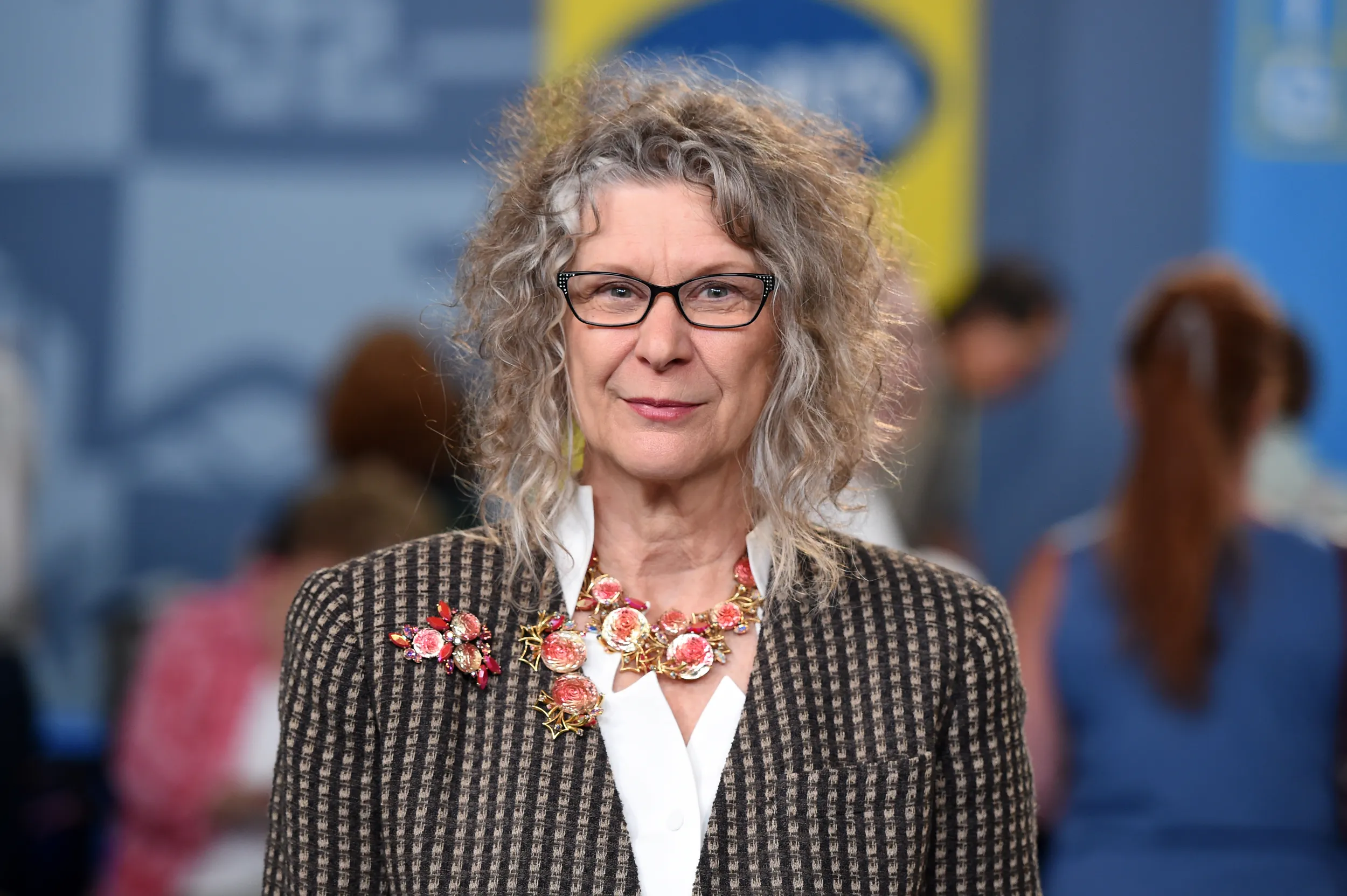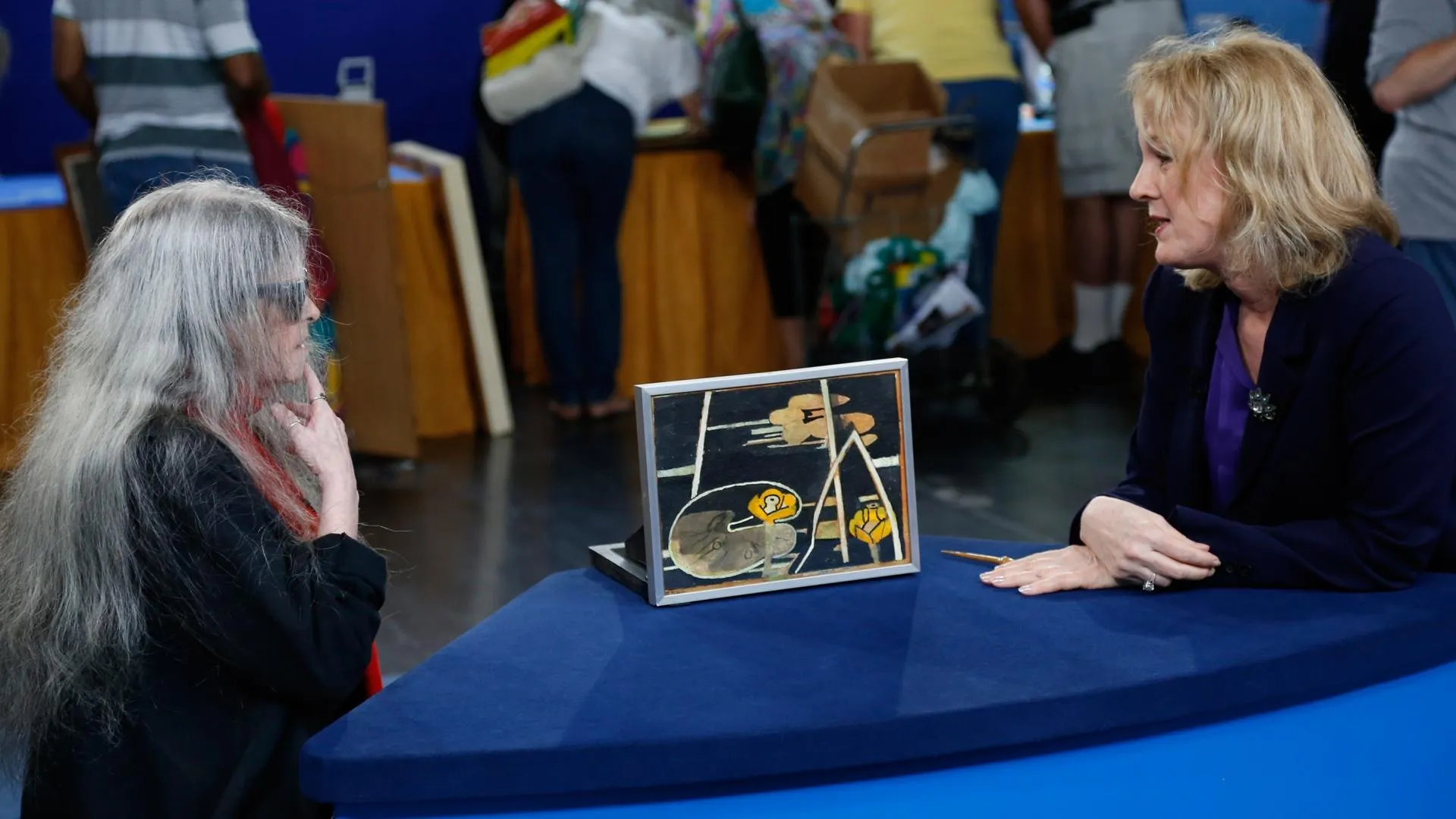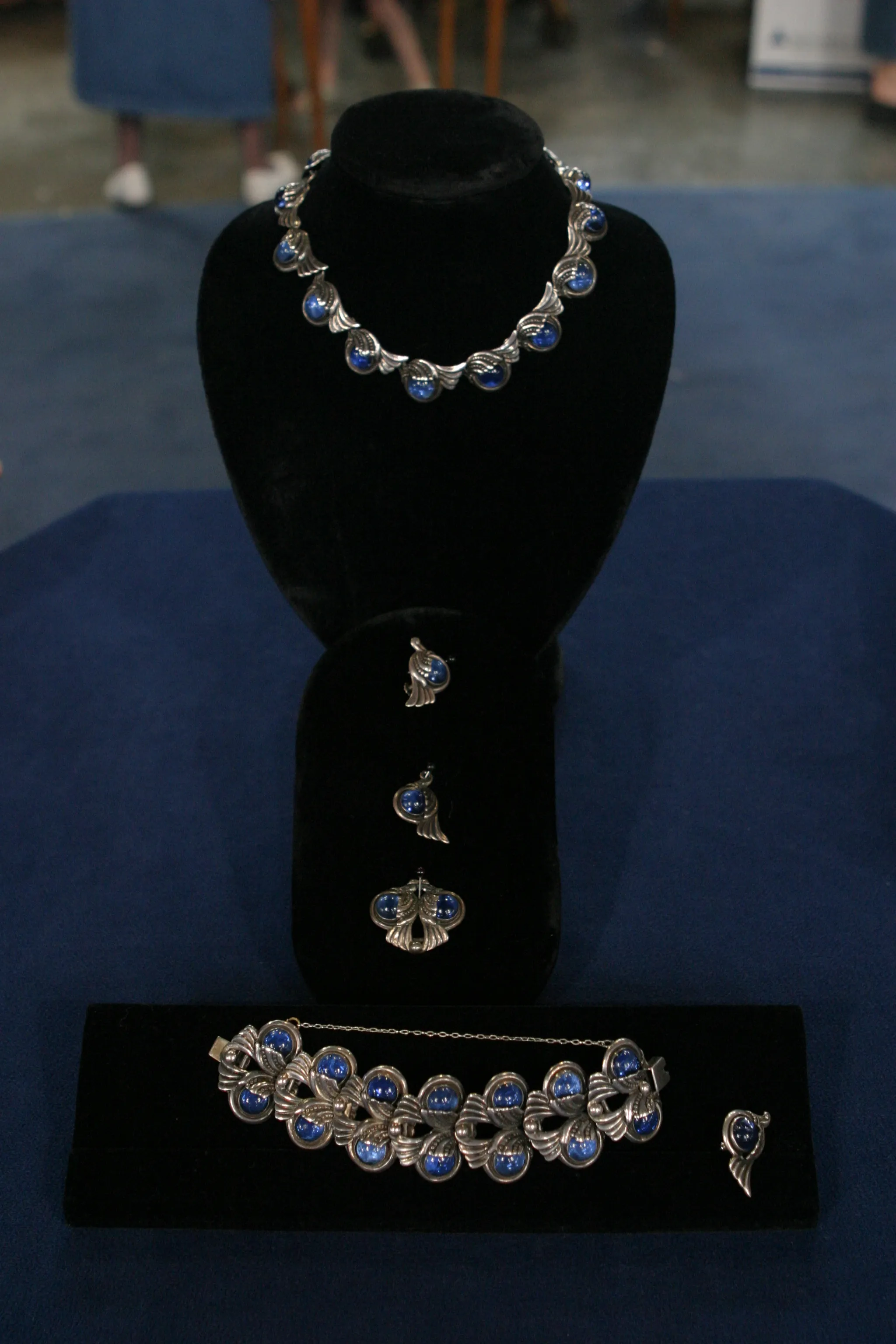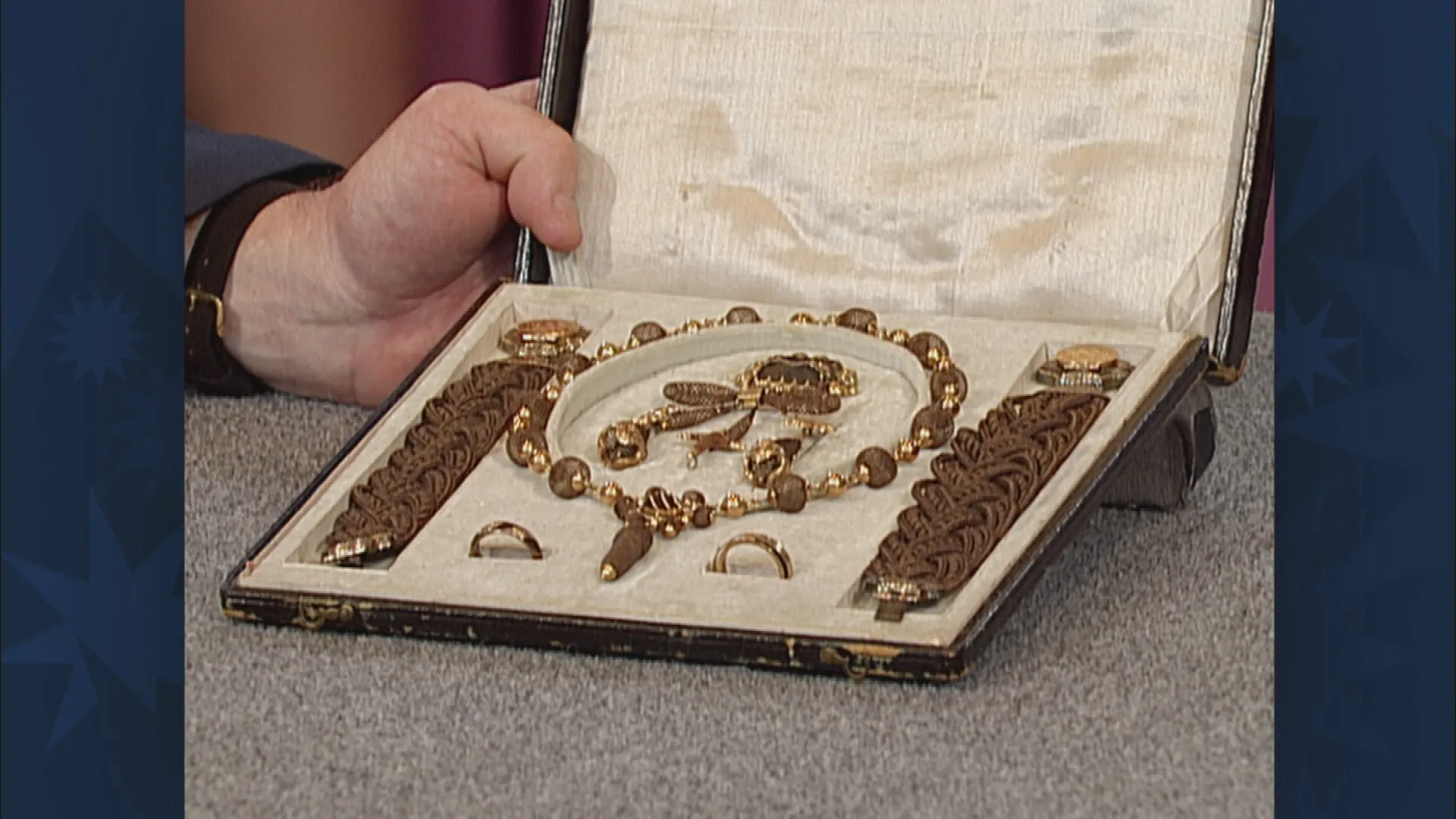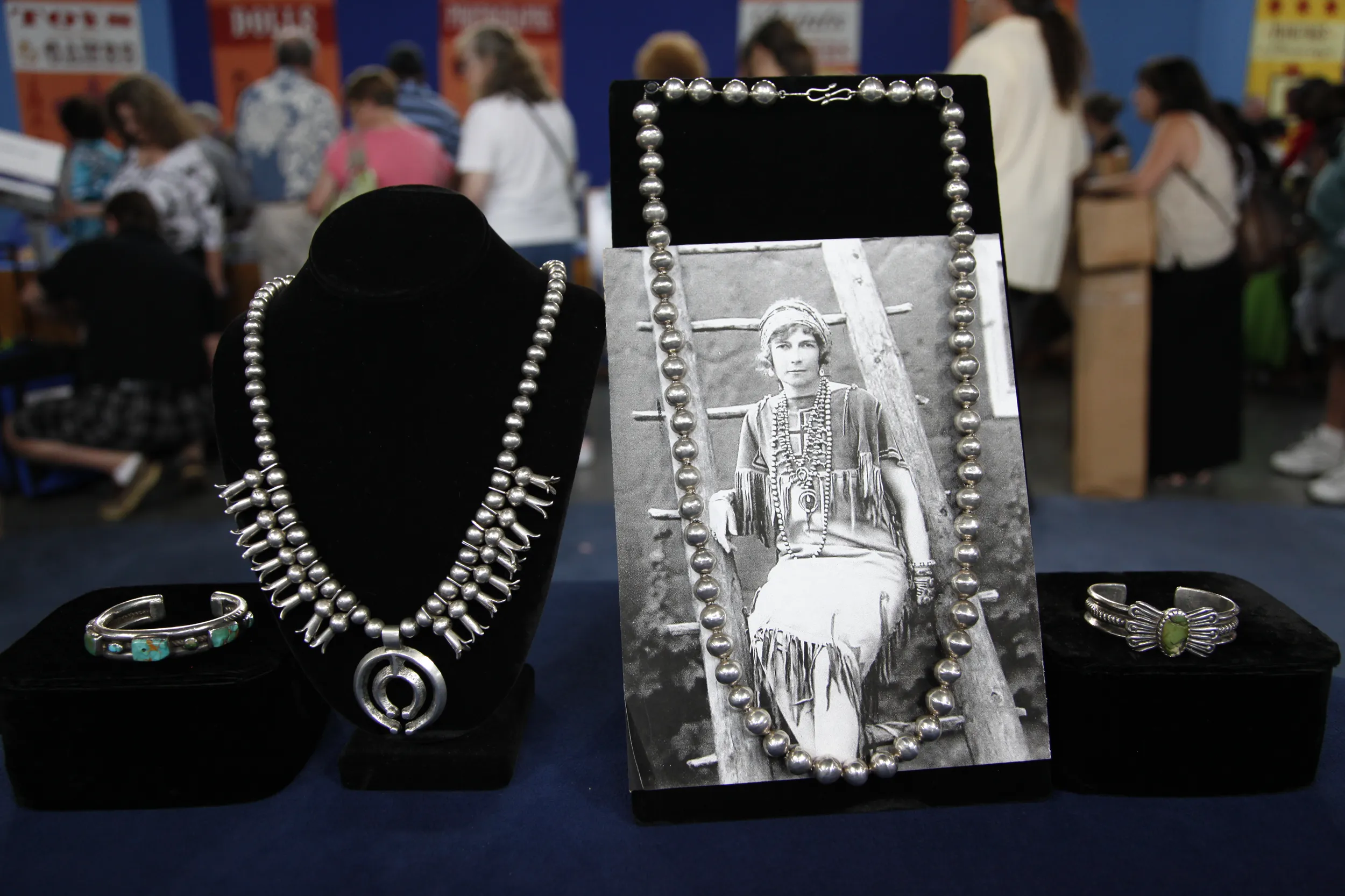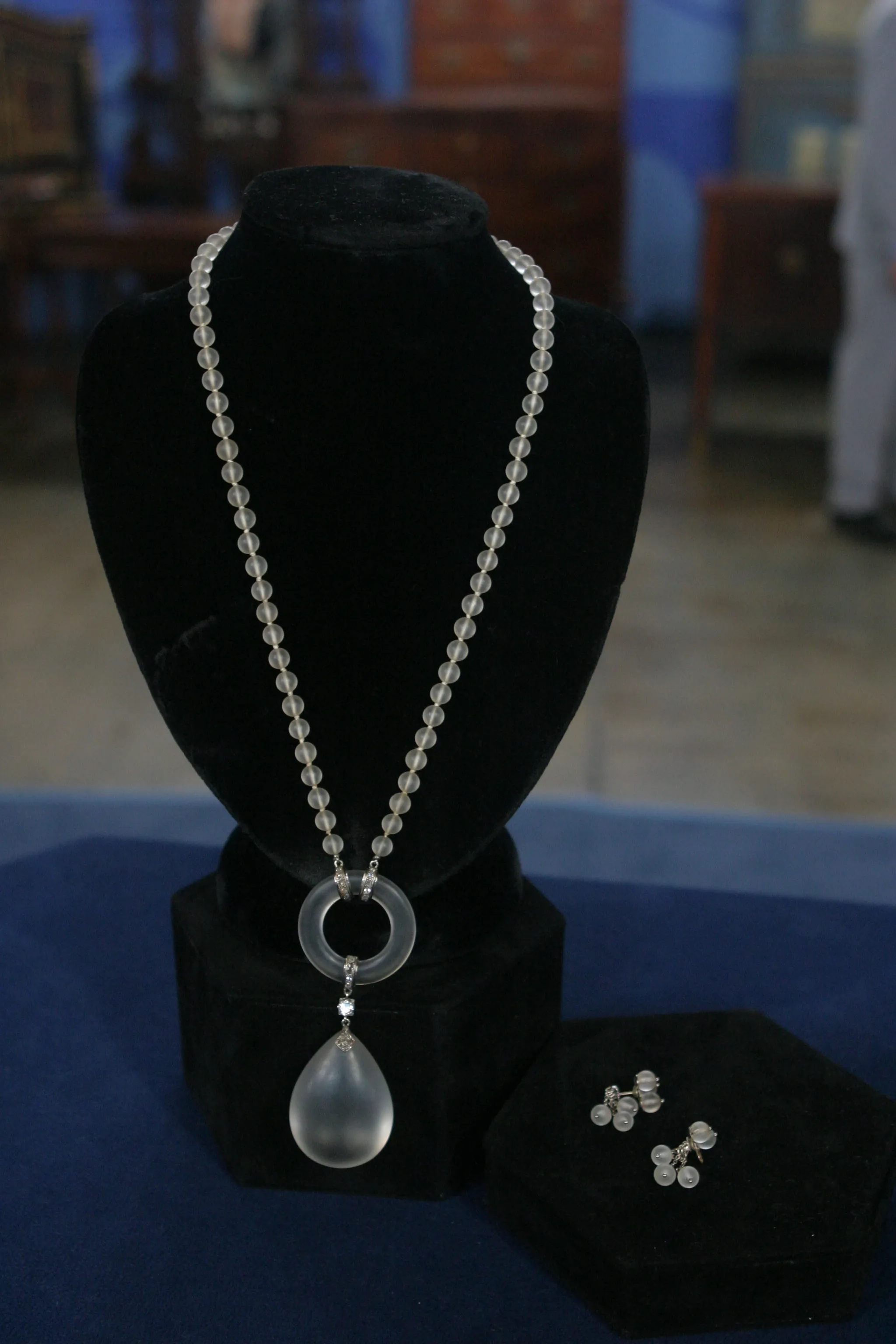HOST: Every element of a successful movie has to make fantasy seem very real. Joseff of Hollywood can make costume jewelry made of glass and base metal look antique and glamorous, or he can make it look like a million bucks. Certainly the movie stars who wore his pieces throughout much of the golden age of Hollywood would seem to shine even brighter wearing a Joseff-designed necklace, ring or brooch. We met up with appraiser Rhinestone Rosie to take a look at some of the sparkling pieces made by this jeweler to the stars.
APPRAISER: Joseff was born in 1905 in Chicago. He was quite an industrious young man. Ended up in Hollywood. And he was a very personable young man. He met a fellow named Walter Plunkett. And Plunkett was a costume designer for the major motion pictures. He said, "Walter, the costumes were great, 16th century and all that, but jewelry was 20th century. You need to change that." Walter said, "Hey, if you can do better, do it." So he did. He formed some jewelry himself with his own hands, made some sketches, and a legend was born.
HOST: So then he becomes an icon, a major supplier of jewelry for the movies.
APPRAISER: He did, and he had one secret. He never sold it to the movies, he only rented it. So he built this stockpile that could be used over and over and over again in different shapes, different movies, different composites.
HOST: We have some pieces here to look at that have been shown in movies that we all know. Let's start with this necklace. Tell me about this.
APPRAISER: Well, this one was worn by Scarlett O'Hara, Vivien Leigh, in Gone with the Wind. And in this scene, she's with Rhett Butler and she's just gobbling this food down, and Rhett is sitting beside her amused, and he does say to her, "You know, there is more food in the kitchen."
HOST: (chuckling) Without the provenance, a necklace like this costume jewelry, what would be the value?
APPRAISER: In a costume forum on a retail level, $1,200 to $1,500.
HOST: But when you put it around Vivien Leigh's neck in one of the classic movies of all time, I would imagine the value goes up a bit.
APPRAISER: A bit. I'd say at a good, well-advertised auction, it would probably go $100,000 to $150,000.
HOST: So, I understand that his rental business is booming and he realizes, "There's another market out there. "There's a market for women who want to look like movie stars."
APPRAISER: Oh, yeah, sitting in those dark theaters, we saw these glamorous girls wearing jewelry and we wanted it. And he made that happen. In the late 1930s, he opened a line to major department stores all around the country.
HOST: So, we actually have an example of that. We have two pair of earrings here, and one of them was worn by a big movie star, and the other was one that could be purchased by anyone who wants to look like a movie star.
APPRAISER: That's correct. These were worn in publicity stills by Grace Kelly for a movie called High Society in 1956. They are gold-tone over brass. They're faux pearls. And then he created a pair of similar design for the retail market and they are also faux pearls with gold over brass.
HOST: And because they were on Grace Kelly's ears, I would imagine the value is pretty big.
APPRAISER: I'd say at an auction, a good estimate would probably be about $7,500.
HOST: And this other pair of earrings in the style of those Grace Kelly earrings were for the retail market. And what would be the value of those earrings?
APPRAISER: $225 to $250.
HOST: Well, it's great to hear the story of Eugene Joseff and stand here amongst all this very historic jewelry, and great to talk to you about it.
APPRAISER: Thank you so much.
